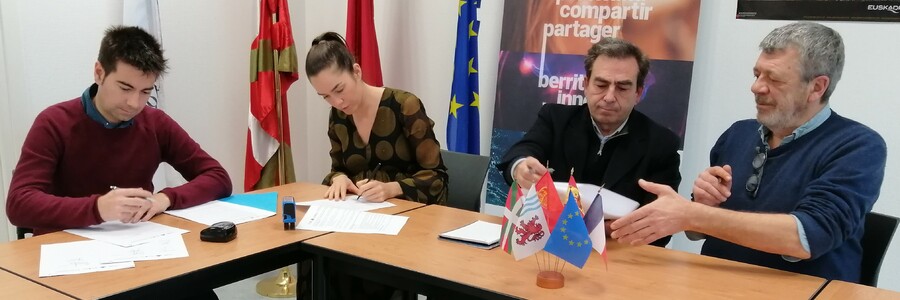Own development model for Integrated Management of Technological Innovation.
Robot system for the machining of composites in the aeronautics industry

Currently, there is a clear trend in the global manufacturing industry to replace metal parts with composite parts, with the aim of reducing the weight of components and increasing product performance in sectors as diverse as transport, energy generation, construction and defence.
The global composite market shows an annual growth rate of 8.13% between 2017 in 2022, but unfortunately the European market share is not increasing as quickly as the composite industry in other regions of the world. One of the main reasons for this is the relocation of production facilities to countries with different wage structures, production technologies and legislation on health and safety at work.
Specifically, the dust and swarf produced during the machining of composite materials is abrasive to the machine, and generally puts the performance of the machine parts at risk, shortening their life-span and posing a serious risk to the health of human beings.
The goal of the project is to design a robot cell to machine composite parts for the aeronautics sector. The aim of this project is the implementation of this robot cell, which will carry out the material machining operations and, at the same time, extract by suction the fibres and dust particles generated during the process, thus preventing their possible inhalation and providing greater safety for the operator.
The Txipirentsi project proposes the use of an industrial robot instead of a conventional machine tool, which will make it possible to configure the system to the changing conditions as regards the size and type of the workpiece being machined. For this reason, the incorporation of a rotary robot platform or a linear track is proposed, which will allow the robot system to provide greater flexibility in the production capacity of companies.
The test that were carried out produced the necessary technical requirements for the head, in terms of dimensioning of both the robot and the head. The proposed design includes a spindle for machining operations with robots fitted with an internal suction system. This system is more effective as it generates the suction force precisely at the cutting point, i.e. the tip of the tool, and not throughout the working area, thus reducing electrical consumption for suction by 65%.
Moreover, a compensation system for robot deformation has been designed based on continuous monitoring of the machining force and the correction of the position of the robot with the aim of increasing part precision.
The scope of the project includes the manufacture of the design of this robot for composite machining. This covers both the manufacturing of the different components and the integration and validation of the cell.